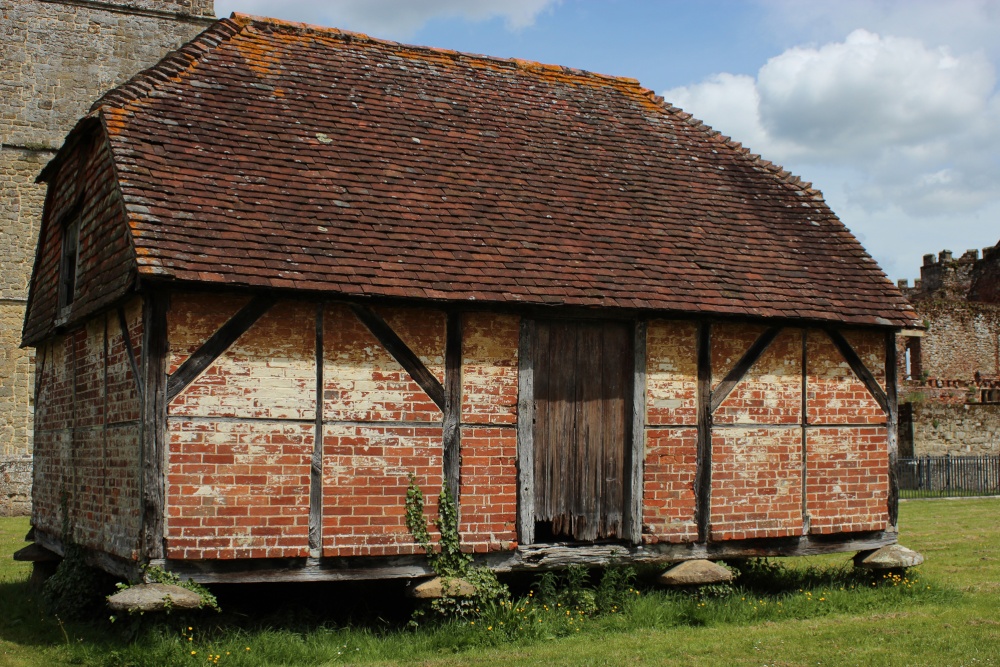The Cowdray Granary, a Grade II listed building from the 17th century, stands as a remarkable relic of West Sussex’s agricultural and architectural history. Situated beside the ruins of the once-majestic Cowdray House, this granary is a testament to the practical and ingenious engineering of the time. Despite centuries of change, the structure remains in outstanding condition, offering a rare opportunity to glimpse into a pivotal aspect of past agricultural life.

Ingenious Design: The Role of Staddle Stones
One of the most distinctive features of the Cowdray Granary is its use of staddle stones. These large, mushroom-shaped stones support the structure by elevating it above the ground. This clever design serves multiple purposes. By raising the granary, it helps protect the building from water damage, particularly from rising ground moisture. Additionally, the staddle stones act as a deterrent to vermin, such as rats and mice, ensuring that the grain stored within the granary remains secure and uncontaminated. This practical solution demonstrates the 17th-century craftsmanship and foresight that were essential in preserving agricultural products over time.

Cultural and Historical Significance
The survival of the Cowdray Granary is a testament to the quality of construction and design used in the 17th century. The granary was not merely a utilitarian structure but also an essential component of agricultural life, helping to store surplus grain and other products vital for the community’s sustenance. Its enduring presence provides insight into how architecture and engineering were used to meet the needs of rural communities long before the advent of modern building techniques.

Standing next to the ruins of Cowdray House, once one of England’s grandest country estates, the granary further enriches its historical significance. The house, which was partially destroyed by fire in the 18th century, adds a poignant backdrop to the granary, offering a glimpse of the opulence and grandeur that once existed on the site. Together, the granary and the ruins form a captivating contrast between the utilitarian and the luxurious, illustrating the breadth of historical narratives embedded in this site.
A Link to the Past
Today, the Cowdray Granary stands not only as a reminder of the past but also as a symbol of the region’s agricultural history. It reflects how traditional building techniques—such as the use of staddle stones—can still inspire admiration and offer valuable lessons. The granary’s preservation is a direct link to the craftsmanship and ingenuity that were once commonplace in rural England. As it remains in excellent condition, it continues to highlight the importance of historical structures in understanding the past and the lives of the people who relied on them.
In conclusion, the Cowdray Granary is not only an architectural and engineering achievement but also a crucial piece of the agricultural heritage of West Sussex. Its enduring presence provides a lasting connection to a time when such buildings were vital to daily life, ensuring that the legacy of England’s rural past is preserved for future generations.

